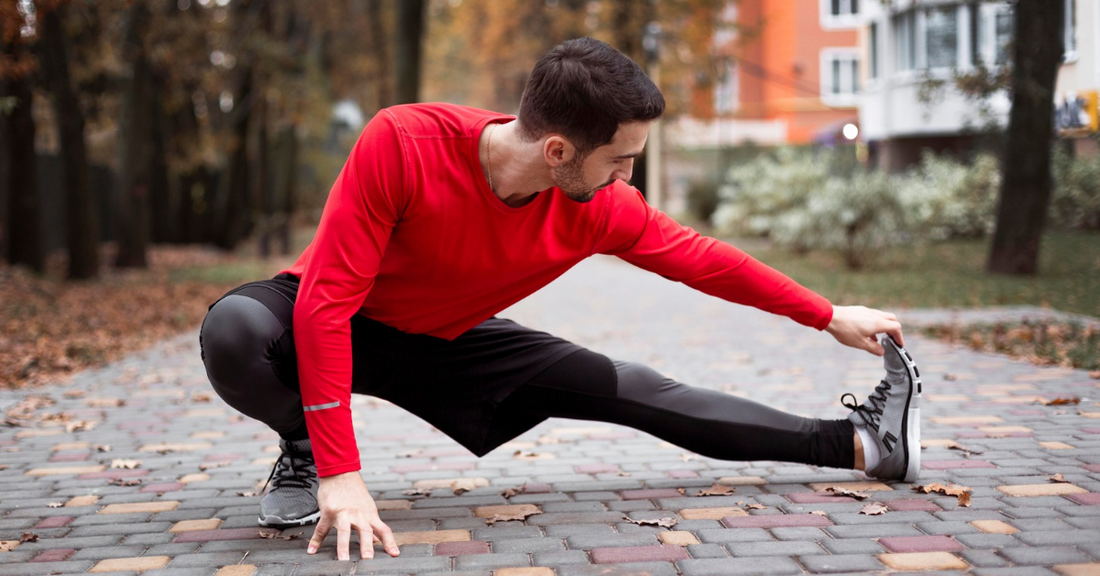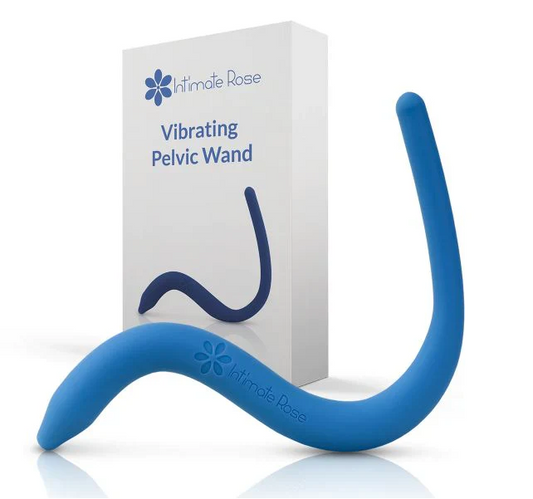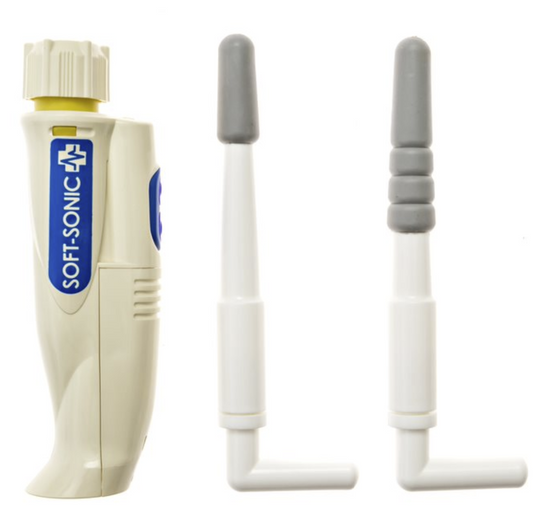
10 Prostate Exercises to Maintain a Healthy Prostate
Share
Did you know that regular exercise may actually lower your risk of prostate enlargement?
A recent genetic study found that high-intensity physical activity can reduce the risk of prostate enlargement by up to 10%. Using Mendelian randomization, researchers confirmed a causal link between intense physical activity and better prostate health, showing that the benefits aren’t just a coincidence.
To help you take action, this article covers 10 prostate exercises that can support a healthier prostate and improve your overall pelvic function.
In this article, we'll cover 10 simple prostate exercises that can help you maintain a healthy prostate
1. Kegel Exercises (Pelvic Floor Contractions)
Kegel exercises are essential for maintaining prostate health. They help strengthen the pelvic floor muscles, which support your bladder and improve urinary control, especially after prostate surgery.
These exercises are simple and discreet. You can do them anytime and anywhere, making it easy to turn them into a daily habit.
To perform Kegel exercises effectively, follow these steps:
- Identify your pelvic floor muscles by trying to stop the flow of urine midstream. The muscles you engage are the ones you'll be working.
- Contract these muscles and hold for 3 to 5 seconds, then relax for the same amount of time.
- Aim for around 10 repetitions per session, performed three times a day. Gradually increase the number of reps as your strength improves.
- Start while lying down, then progress to sitting, and eventually to standing as the muscles become stronger.
- Use both quick contractions and longer holds to target different muscle fibers.
- Breathe normally during the exercises. Avoid tightening your glutes, thighs, or abdominal muscles.
It’s important to note that while Kegel exercises are highly beneficial, overdoing them can be counterproductive.
Like any muscle group, your pelvic floor needs time to rest and recover. Doing too many repetitions or holding the contractions too long can lead to fatigue or even pelvic discomfort.
2. Bridge Pose (Pelvic Tilt with Glute Activation)
Bridge pose combines pelvic stability with core strength while boosting circulation to pelvic organs. This exercise activates deeper pelvic muscles that directly support prostate and bladder function.
The dual muscle engagement makes this exercise particularly effective for men recovering from prostate surgery or dealing with urinary issues.
To start, lie on your back with knees bent and feet flat on the floor. Lift your hips while engaging your glutes and pelvic floor muscles simultaneously. Hold for 5-10 seconds at the top position, then lower slowly. Complete 10-15 repetitions per set.
3. Aerobic Exercise (Walking, Cycling, Swimming)
Aerobic exercise provides powerful benefits for enlarged prostate symptoms. Research consistently shows that men who maintain regular aerobic exercise experience fewer BPH symptoms and improved urine flow. This is likely due to improved blood circulation, reduced inflammation, and better hormone balance, all of which support overall prostate health.
To get the most benefit, aim for at least 30 minutes of moderate aerobic activity, five days a week.
Low-impact options like brisk walking, swimming, or using an elliptical machine are ideal, as they boost circulation without placing strain on the pelvic area.
Over time, these habits can significantly improve comfort and urinary control while promoting overall prostate health.
4. Squats
Squats are a powerful way to strengthen multiple muscle groups, and they’re especially beneficial for the pelvic floor. These compound movements not only activate your core but also boost circulation and help improve bladder control over time.
To perform a proper squat, stand with your feet shoulder-width apart and lower your hips as if you’re sitting into a chair, keeping your back straight.
For added benefit, engage your pelvic floor muscles with a Kegel contraction at the lowest point of the squat. Aim to complete 2–3 sets of 10–15 reps.
As you build strength and confidence, consider increasing your reps or holding the squat position a few seconds longer for deeper engagement.
5. Seated or Standing Marches
Marching exercises provide gentle pelvic floor engagement while improving mobility, making them perfect for beginners or post-surgery recovery. These movements activate your core without excessive strain.
The gentle nature of marching makes it ideal for gradually building strength after prostate procedures or for men just beginning their exercise journey.
6. Cat-Cow Stretch (Pelvic Floor Mobilization)
The Cat-Cow stretch is a gentle, yoga-inspired movement that involves arching and rounding your spine while on all fours. This smooth, controlled motion helps loosen the pelvic floor, strengthen your core, and ease built-up tension.
Many men find this stretch effective before bedtime, as it calms the pelvic area and prepares the body for rest.
To perform the Cat-Cow stretch, follow these steps:
- Start on all fours with your hands under your shoulders and knees under your hips, maintaining a neutral spine.
- Inhale and arch your back into the “cow” position, lifting your head and tailbone. Add a light Kegel hold during this phase to gently engage your pelvic floor.
- Exhale and round your spine into the “cat” position, tucking your chin and pelvis.
-
Repeat slowly and smoothly, syncing each movement with your breath.
This simple routine promotes both spinal flexibility and pelvic floor strength, making it a great addition to your daily wellness routine.
7. Dead Bug Exercise
Dead bug exercises are excellent for building core stability while activating the deep pelvic floor muscles. The movement gets its name because it resembles a bug lying on its back with arms and legs raised in the air.
To get started, lie on your back with your arms and legs raised in a tabletop position. Slowly extend one arm and the opposite leg while keeping your core and pelvic floor engaged. The key is slow, controlled movement, not speed.
One of the biggest benefits of dead bug exercises is their ability to retrain the neuromuscular system, which is especially helpful for men recovering from prostate surgery. This movement strengthens the connection between the brain, core, and pelvic floor muscles, improving coordination and control.
8. Diaphragmatic Breathing (Belly Breathing)
Deep breathing plays a key role in reducing pelvic tension and improving blood flow to the prostate. By activating the parasympathetic nervous system, it encourages relaxation and supports healing.
To practice, sit or lie in a comfortable position. Inhale deeply through your nose, allowing your belly to rise, then exhale slowly through your mouth.
For added benefit, combine this technique with Kegel exercises to enhance muscle coordination and control.
Over time, regular deep breathing not only helps manage stress-related urinary symptoms but also improves pelvic floor function by reinforcing healthier breathing patterns.
9. Child's Pose (Restorative Yoga Position)
Child’s Pose is a gentle stretch that mimics a natural resting position, making it ideal for relaxation and pelvic tension relief. Its calming effect is especially helpful after surgery or during periods of discomfort.
To perform the pose, start by kneeling and slowly sit your hips back toward your heels. Reach your arms forward and let your body relax fully into the stretch.
Breathe deeply and steadily, focusing each breath into your pelvic area to ease tightness. Hold this position for 30 seconds to 2 minutes, depending on what feels comfortable.
This combination of gentle movement and mindful relaxation makes Child’s Pose especially helpful for men dealing with pelvic pain or recovering from prostate-related procedures.
10. Wall Sits
Wall sits are a powerful way to build endurance in your thighs, glutes, and pelvic floor through sustained isometric contraction. By targeting these key muscle groups, the exercise enhances overall support for your pelvic organs.
To correctly perform this exercise, slide down a wall into a seated position as if sitting in a chair. Hold this posture for 20–60 seconds while gently activating your pelvic floor with light Kegel contractions.
As your strength increases, you can gradually extend the hold time and add more repetitions.
Frequently Asked Questions
What's the best exercise for prostate enlargement?
Aerobic exercise combined with Kegel exercises provides the most comprehensive benefits. Activities like walking, jogging, and swimming can help reduce urinary problems, while pelvic floor exercises target specific symptoms.
What is the 5 second exercise to shrink the prostate?
The 5-second Kegel hold involves contracting your pelvic floor muscles for 5 seconds, then relaxing for 5 seconds. While this won't shrink your prostate, it strengthens supportive muscles and improves symptoms.
How does a man exercise his prostate?
Men exercise their prostate indirectly by strengthening surrounding muscles through Kegel exercises, squats, and aerobic activity. These movements improve blood flow and reduce inflammation around the prostate.
Can Kegels improve erectile function?
Yes, Kegel exercises strengthen the muscles responsible for maintaining erections. Regular practice can improve blood flow and muscle tone, potentially enhancing erectile function.
How often should I do prostate exercises?
Perform Kegel exercises daily, aerobic exercise 5 times per week, and strength exercises 2-3 times per week. Consistency matters more than intensity for long-term prostate health.
Complement Exercises with Products That Support Prostate Health
While exercise forms a strong foundation for pelvic and prostate health, it often works best when paired with the right support tools.
The Kegel Pelvic Floor Muscle Trainer for Men from the Prostate Health Store offers guided resistance and real-time feedback, helping you master technique and strengthen faster without guesswork. Its FDA-approved design ensures both safety and effectiveness.
For added nutritional support, our Ultra Prostate Health Formula delivers 11 key nutrients—including saw palmetto, pygeum, and stinging nettle root—to help reduce inflammation and support prostate function when exercise alone isn't enough.
We also offer a Sonic Prostate Massager designed to provide therapeutic stimulation, boost circulation, and enhance your physical routine.
Order now and support your recovery with proven, doctor-recommended tools.




